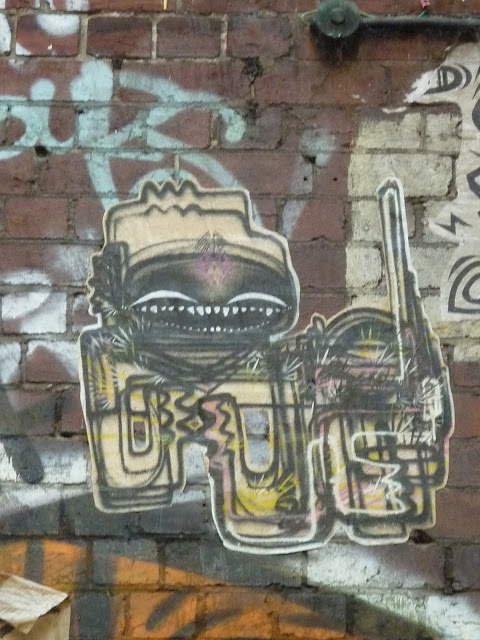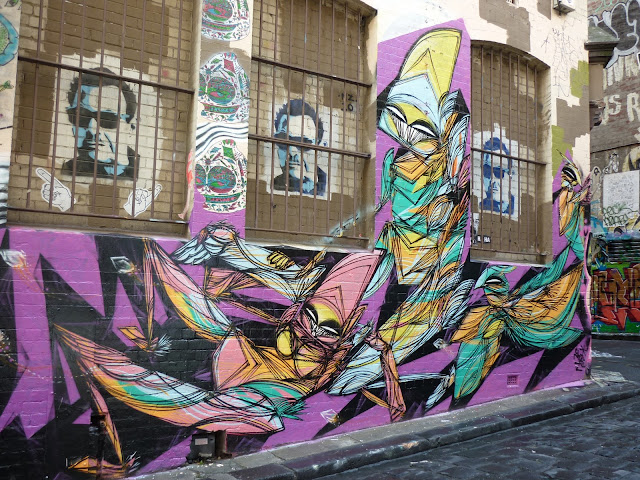When it's not raining in Brisbane it's blistering hot or worse, both. Galleries are air conditioned and usually sheltered, so it's an easy decision. Here's what's currently showing in Brisbane.
Gallery of Modern Art, Stanley Place, Southbank.
21st Century: Art in the First Decade. On now until April 26th 2011
 |
| Carsten Holler. Image via QAG |
Art in the First Decade, as its name suggests features art made from 2000 to 2010, celebrating the first decade of this millennium in art. Featuring national and international artists such as controversial artists Tracey Emin and Damien Hirst. With several themed rooms, spreading over three levels, there is a lot to see. Even if you are tired after negotiating your way around the first two levels be sure to push through to see the third, there is a beautiful Bill Henson photograph and highly amusing Richard Bell painting that are both worth the energy. The exhibition boasts 'highly interactive public programs' and 'interactive artists,' which basically means the kids won't get bored because there is a giant slide (pictured above).
AC Tip: There is a coffee cart on the first floor under the escalator ( you will need it).
 |
Scott Redford, Perpetual Abstraction, 1997. Via QAG
|
Introducing Reinhardt Dammn, we all know him. He was that kid in high school, the cute tanned one with the sun bleached hair. Always wearing that faded Nirvana t'shirt, skipping school to surf and smoke weed on the beach, surf board permanently attached to his arm pit...that one. Reinhardt Dammn (two m's) is a fictional character ( or is he really?) created by Scott Redford, emphasising pop and tourist culture. The exhibition undresses the glamorous Surfers Paradise and scrutinises visual culture.
AC tip: Examine the sheets in Reinhardt's make shift room, they are surprisingly accurate!
Vida Lahey: Colour and Modernism. On until February 13 2011
 |
Vida Lahey, Calendulas, 1936-37. Via Google Images
|
Possibly reminiscent of those water colours at Grandma's house, and the exhibition layout does not do much to negate away from that familiar memory. This one will probably bore the kids to death. However keep in mind Lahey is a Brisbane artist working under the influence of French Impressionism and these works mark the influence of European art being felt in Australia during the time. Women painting floral arrangements in a modern style was a common theme at the time and it is believed by some this style blossomed during the war years. Whilst the men were away, the women were able to more extensively develop their art through a limited domestic setting.
AC tip: the current collection displays at QAG have recently changed. Head upstairs for the International Collection featuring artists such as Degas, Picasso and Tintoretto.
The University of Queensland Art Museum.
Multplicities: Self Portraits from the Collection.Until January 16.
 |
| William Yang, Self Portrait #3, 1949. Via UQAM |
The self portrait has always held a certain fascination, are we simply looking at an artist's physical self portrayal or their concious or subconscious psychological projection? It seems that we are never satisfied with the former and persist in trying to read into the portrait, attempting to make it something more than a painted reflection. Multplicities is a opportunity to examine the self portrait of varied established artists including Luke Roberts, Scott Redford, Gordon Bennett and Vernon Ah Kee.
NEW 2010: Selected Recent Acquisitions. On now until February 20.
 |
Lisa Adams, Sparrow, 2009. Via UQAM
|
A selection of recently acquired works, featuring Lisa Adams, Tony Albert, Lincoln Austin, Tony Garofalakis, Louise Hearman, Bill Henson, Danie Mellor, TV Moore, Sidney Nolan, Dennis Nona, John Passmore, Julie Rrap, Arryn Snowball, Madonna Staunton, Thomas Tjapaltjarri, Guan Wei and Ken Whisson.....phew!
Across Country, Ken Hinds Cultural Collection. Showing until January 30 2011
Sunshine Coast based art collector, Ken Hinds has a passion for Aboriginal Indigenous artworks. Hinds' collection is more than just the souvenir type dot paintings commonly exploited from "outback Australia." His passion has lead him to the Australian central outback to grasp a better understanding of Indigenous art and its beginings. The collection is nothing less than impressive, featuring artists like Namatjira, Clifford Possum Tjapaltjarri, Johnny Warangkula Tjupurrula, Lena Yarinkura, Lily Karedada, Minnie Pwerle and Turkey Tolson Tjupurrula.
bonne journée,
Stephanie


























































